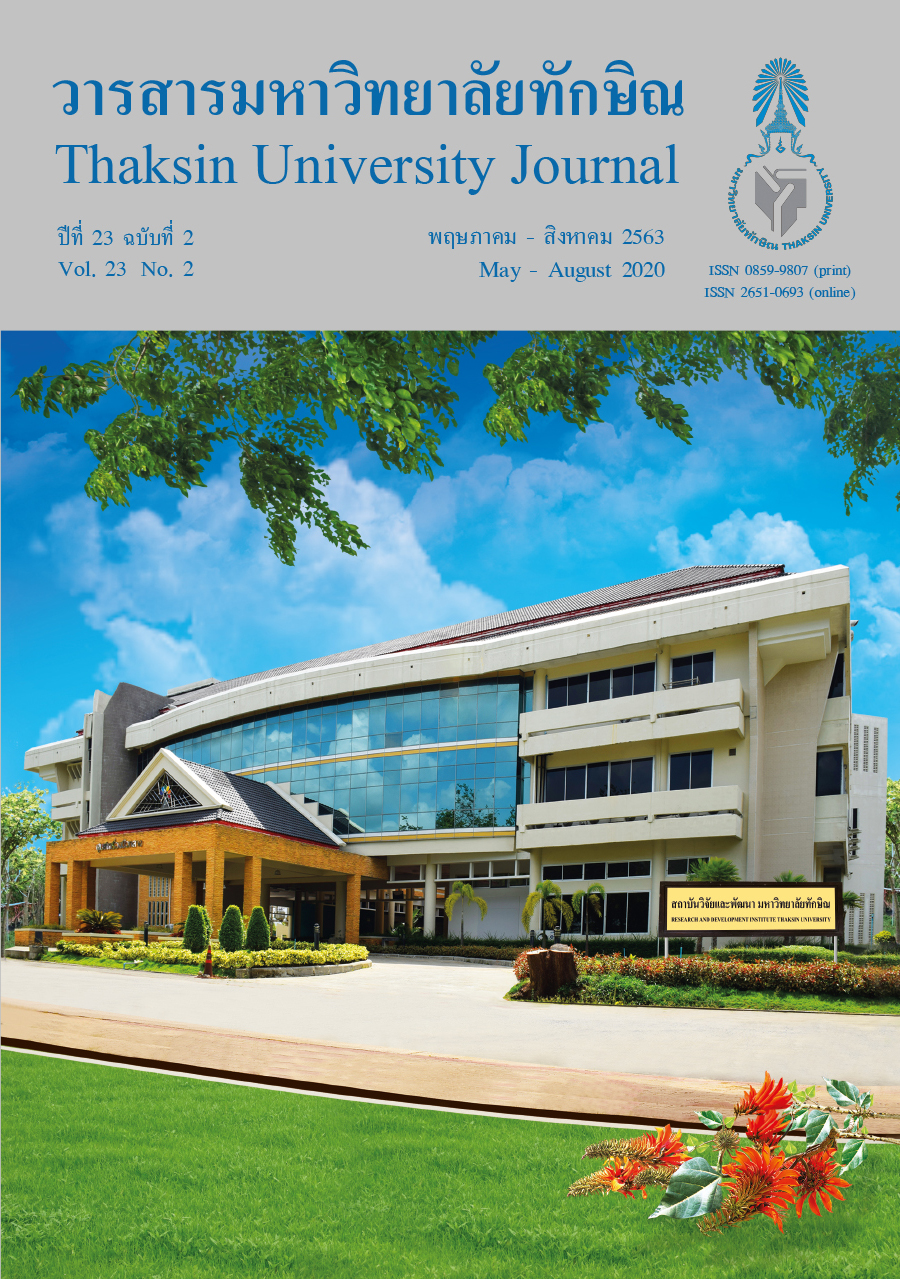Assessment of Tidal Energy Resource Potential along the Coast of Andaman Sea in Thailand
Main Article Content
Abstract
This research focuses on an assessment of tidal energy resource potential along the coast of the Andaman sea in Thailand by using POM, ROMS and SMS models that were developed under hydrodynamic hypothesis. In POM and ROMS modelling, the bathymetric information from satellite data and database of salinity and temperature were used for defining the condition of models at a 3 km resolution. The SMS model resolution was 25 m. The M/P and RMSE were used to validate the models by comparing with 4 observed datasets. Furthermore, the potential tidal resources map was prepared by classifying the area into three classes, i.e., high, middle and low potential. The simulation showed that the tidal current speed was in the range of 0.3-0.5 m/s. The power density of the kinetic energy was in the range of 150-160 W/m2. The highest potential areas are the Pak Phra Strait in Phuket-Phang Nga Province and Kra Buri estuary in Ranong Province. The mean error of the map was in the range of 8-30%. Therefore, tidal energy resources along the coast of the Andaman sea in Thailand was sufficient for further development of the power generation using the underwater current.
Article Details

This work is licensed under a Creative Commons Attribution-NonCommercial-NoDerivatives 4.0 International License.
References
Mungmeedee, S. (2020). World economy (Online). Retrieved February 13, 2020, from https://www.businesstoday.co/world/08/01/2020/%E0%B9%84%E0%B8%9F%E0%B8%9B%E0%B9%88%E0%B8%B2%E0%B8%AD%E0%B8%AD%E0%B8%AA%E0%B9%80%E0%B8%95%E0%B8%A3%E0%B9%80%E0%B8%A5%E0%B8%B5%E0%B8%A2/.
International Renewable Energy Agency(IRENA). (2017). Renewable Energy Outlook:Thailand. AbuDhabi: IRENA.
Niyontham, L., Waewsak, J., & Chuncham, C. (2020). Assessment of wind energy using global wind atlas methodology: a case study of central region of Thailand. Thaksin University Journal, 23(1), 39–48.
Mejia-Olivares, C.J., Haigh, I.D., Wells, N.C., Coles, D.S., Lewis, M.J., & Neill, S.P. (2018). Tidal-stream energy resource characterization for the Gulf of California, México. Energy, 156, 481–491.
Alonso, R., Jackson, M., Santoro, P., Fossati, M., Solari, S., &Teixeira, L. (2017). Wave and tidal energy resource assessment in Uruguayan shelf seas. Renewable Energy, 114(PartA), 18–31.
Mestres, M., Cerralbo, P., Grifoll, M., Sierra, J.P., & Espino, M.(2019). Modelling assessment ofthe tidal stream resource in the Ria of Ferrol (NWSpain) using a year-long simulation. Renewable Energy, 131, 811–817.
Rourke, F.O., Boyle, F., & Reynolds, A. (2010). Tida. Applied Energy, 87(2), 398–409.
Department of Alternative Energy Development and Energy Efficiency. (2015). Alternative energy development plan: AEDP 2015(Online). Retrieved September 8, 2018, from http://www.eppo.go.th/images/POLICY/ENG/AEDP2015ENG.pdf.
Onsri, N., & Sojisuporn, P. (2010). Application of numerical model for water circulation around Had Khanom-MuKo Thale Tai. Burapha Science Journal, 15(1), 23–30.
WordPress Theme by Kadence Themes. (2020). Radar altimetry tutorialand toolbox (Online). Retrieved 13 February 2020, fromhttp://www.altimetry.info/thematic-use-cases/ocean-applications/tides/.
Stifter, G. (2006). Princeton ocean model seminar (Online). Retrieved September 8, 2018, from http://mafija.fmf.uni-lj.si/seminar/files/2006_2007/semeng.pdf.
O’Doherty, T., Mason-Jones, A., O’Doherty, D.M., Evans, P.S., Wooldridge, C.F., & Fryett, I. (2010). Considerations of a horizontal axis tidal turbine. Proceedings of Institution of Civil Engineers-Energy, 163(3), 119–130.
Lim, H.S., Kim, C.S., Park, K.S., Shim, J.S., & Chun, I. (2013). Down-scaled regional ocean modeling system (ROMS) for high-resolution coastal hydrodynamics in Korea. Acta Oceanologica Sinica, 32(9), 50–61.


